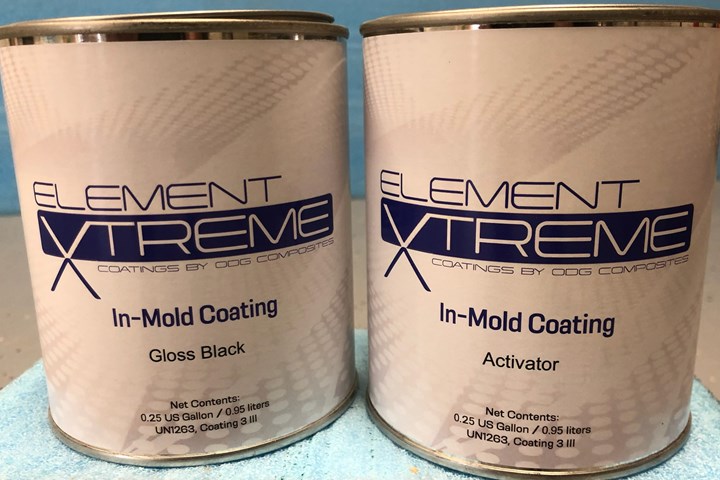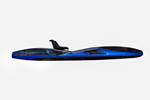In-mold coating offers high-performance finishing for epoxy-infused composites
ODG Composites’ Element Xtreme is a lightweight, long-lasting protective and aesthetic coating suitable for a range of industrial and commercial applications.

ODG Composites LLC (Saginaw, Texas, U.S.) has launched Element Xtreme Coatings, a specialty in-mold coating designed for exterior durability, flexibility and adhesion when applied to infused, epoxy-based composite parts.
According to Russ Emanis, founder of ODG Composites, traditional gel coats can account for 15-25% of the total part weight depending on part size. Element Xtreme, sprayed directly into the mold prior to infusion and cure, is said to save weight by up to 50% compared to gel coats. Less coating is required due to the hardness of Element Xtreme.
Available in a wide range of colors, the product has been developed for simple application, fast cure and a Class A finish directly from the mold. Element Xtreme is formulated to last, offering long-term protection in moderate to severe environments; resistance to fresh water, saltwater and many chemicals and fumes; and abrasion and moisture resistance.
Element Xtreme Coatings is said can be applied to any epoxy-infused composite parts in a variety of industrial and commercial end markets, with high utility in the marine industry including fishing kayaks and boat components.
For more information or to order, contact Emanis at (817)-386-0696 or russ@odgcomposites.com, or visit .
Related Content
-
Clean Sky 2 outer wing box demonstrator validates OOA LRI, shimless assembly and SHM
Full-scale wing box project achieves TRL 5 with 2% weight reduction and 4% reduction in recurring production costs through improved manufacturing efficiency and assembly processes.
-
From the CW Archives: Airbus A400M cargo door
The inaugural CW From the Archives revisits Sara Black’s 2007 story on out-of-autoclave infusion used to fabricate the massive composite upper cargo door for the Airbus A400M military airlifter.
-
Sunreef Yachts completes 43-meter single-shot hull infusion project
Sunreef 43M Eco electric catamaran, with a composite surface of 1,700 square meters, is considered to have the world’s largest infused hull.
.jpg;width=70;height=70;mode=crop)





